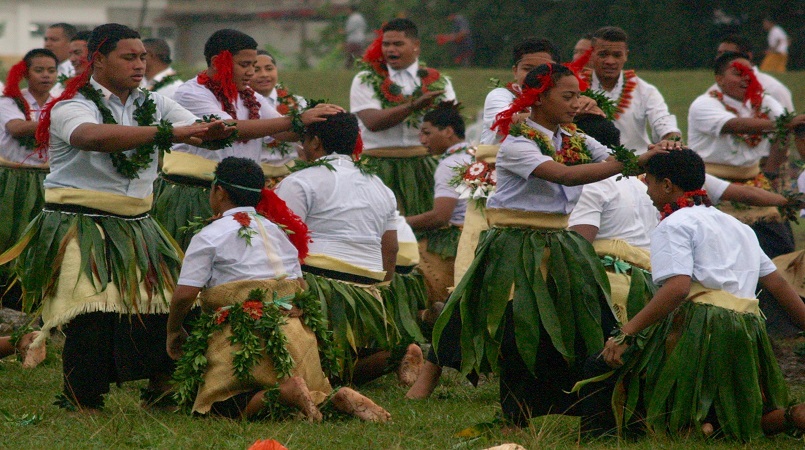
Nuku’alofa, Teufaiva Stadium − Mormonism is based on faith, and the faithfuls showed their appreciation here today for their faithful pioneering heritage in Tonga, the Pacific Islands, and especially for American missionaries over the last century (1916−2
For the third day in a row, the wet environments failed to discourage Mormon youths numbered in the hundreds, from performing cultural dances from throughout the Pacific. Dancers representing Fiji, Maori, Tahiti, Rarotonga, Sāmoa, Hawai’i and Tonga improvised slipping-and-sliding in the mud into their repertoire.
The Royal Family attended celebration events for the third day in a row, joined by a full-house and an overflowed crowd of members and “investigators” as Mormons call non-members. Tongan Mormons who have migrated overseas made their presence felt.
Missionary Work Turns Educational
They helped kick off the celebrations a week ago in Vava’u where Church owned Sainehā High School is located. And historically, Neiafu, Vava’u is truly where The Church of Jesus Christ of Latter-Day Saints (LDS) began its official uninterrupted growth since 1907.
The first (1891) and second wave (1907) of Mormon missionaries were dispatched from the LDS Sāmoan Mission in Upolu. That Mission directly received its authority from headquarters in Salt Lake City, Utah.
The Neiafu Harbor Master in Vava’u, Mr. ‘Iki Fulivai, met two missionaries from the Sāmoan Mission upon their arrival in 1907. Desiring to educate his children in English, he requested the American missionaries to provide his family with home schooling.
Mr. ‘Iki Fulivai, thus became the first Mormon convert in Tonga. Soon schooling interests from the village of Ha’alaufuli brought more missionaries from the Sāmoan Mission.
Liahona High School Sparks Tongan-American Diaspora
Other similar educational interests also came from Tongatapu when word got around of the American missionaries arrival in Vava’u. Prominent businessman and Member of Parliament, Sōsaia Mataele among them of the village of Fo’ui, Tongatapu, sent his wife, Lolohea, with an invitation for missionaries.
Soon, according to MP Mataele’s diary entries, and family members’ oral history: Schools were opened at Fo’ui, Nukunuku, Fāhefa, Hā’utu, Houma, Ha’akame, Ha’ateiho, Ma’ufanga, Kolomotu’a, Kolofo’ou, Mu’a, and finally a school was opened in Lifuka, Ha’apai.
In 1916, the Tonga Nuku’alofa Mission was organized on August 15, linking Tonga directly to Salt Lake City, Utah. In 1924, a co-ed boarding institute called Makeke School opened in eastern Tongatapu. More American missionaries came necessitating the relocation of Makeke School to the Liahona High School present location in 1952.
High school-age students began coming from Tahiti, Fiji, Rotuma, Niuē, and as far away as Vanuatu to attend Liahona High School. The attraction: An opportunity to continue higher education studies in America. It began the Tongan diaspora to Hawaii and the rest of the United States. There are estimated 50,000 Tongans assimilated into the American society, according to the latest U.S. census in 2010.
(Authored by Sione A. Mokofisi, a syndicated journalist living in Tonga. However, his opinions do not necessarily reflect the editorial policy of this Website. Mr. Mokofisi is Director of English, Journalism & Business Management at Tonga International Academy, Haveluloto, Tongatapu. He’s also editor of Tonga’s only bilingual publication, Niuvākai.)
